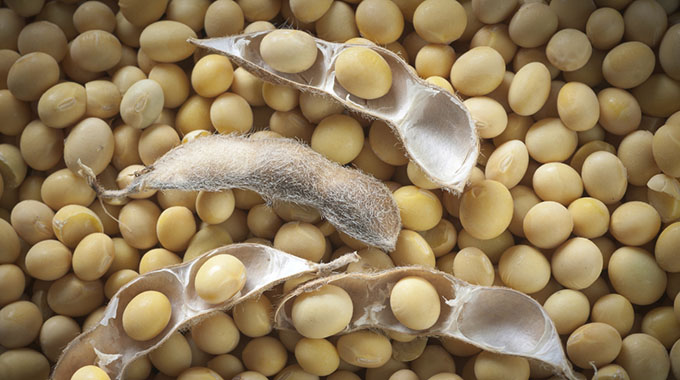Source: Command Agric boost for soyabeans | The Herald April 29, 2019
Nesia Mhaka recently in Maphisa
The Agricultural Rural Development Authority (ARDA) has hailed Government for Command Agriculture, after its Antelope Estate at Maphisa Growth Point in Kezi managed to produce over 35 000 tonnes of soyabean this season.Speaking during a tour of the estate last week, farm manager Mr Aleck Chinyai said the Government-initiated programme had been a boon for their operations.
“We are grateful to the Government for the support that it has been rendering us through Command Agriculture, we have matched and surpassed some of our own expectations,” he said.
“Soyabean contributes significantly to food security in Zimbabwe and it is, therefore, strategic to attain some level of self-sufficiency with regards to soya bean.
“The country needs 300 000 tonnes of soya bean annually for food, feed and other industrial needs, but local output averages 50 000 tonnes.”
Mr Chinyai said soyabean is used as an affordable source of protein for livestock feeds, especially in Matabeleland where grazing pastures are generally low.
“Soyabean is a good source of protein for livestock feed and can also be used in the manufacture of cooking oil, soya chunks, margarine, soap, breakfast cereals and soya milk, among others,” he said.
“Soyabeans is one of the richest crops in terms of crude protein ranging between 35-45 percent and also contains 20 percent oil. It is also used in making cooking oil, margarine, soya chunks, soap, milk to name a few.”
Arda chairman Mr Basil Nyabadza said: “Command Agriculture has galvanised the whole farming community and generated a lot of expectations. The programme has turned farming into business ventures, especially in rural areas.
“All participants in Command Agriculture are motivated by one rallying call of ensuring food security in the country.”
The success of the programme has ensured that the country is self-sufficient and saves foreign currency through reduction in imports.
Newer Post
EMA, ZRP in joint op Older Post
No change in passport fees: RG 
COMMENTS